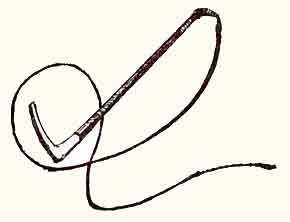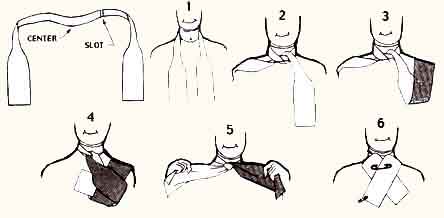The sport of foxhunting requires suitable land in large quantities. Such land is not easy to find and can be lost to hunting by acts of carelessness or ignorance. Our first set of guidelines advocates courteous and responsible behavior to landowners. Hunt country is private property. Riding on non-hunt days must be done with prior permission of the landowner. Do not assume you can freely trail ride on land that we hunt.
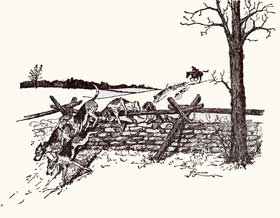 Gates: Leave gates as they are found. Riders are responsible to pass the word to followers either “gate closed” or “gate open” before continuing. When in doubt, the last rider should close the gate and report the action to the Field Master or a staff member.
Gates: Leave gates as they are found. Riders are responsible to pass the word to followers either “gate closed” or “gate open” before continuing. When in doubt, the last rider should close the gate and report the action to the Field Master or a staff member.
Cultivated Ground: Do not ride over plowed or planted ground. This includes hay fields. If the landowner has provided bridle paths on the edges of his fields, ride only on these paths. Most farmers now use the no-till method of farming. This means that they don’t plow their fields in the spring but plant their seeds with no obvious preparation of the ground. Hoof prints in the soil interfere with the proper functioning of the special planting machine and thus reduce the harvest. To lessen the damage horses do to cultivated fields, we must ride at all times on the extreme outer edge and in single file. In areas that are not cultivated but allowed to grow in heavy turf, riders should spread out and not ride in file so as not to make paths. This also gives the Field a better view of the hounds. The Field Master will signal when the Field should spread out.
Livestock: Ride slowly and try to avoid livestock. If any of them break through a fence or go through a gate opened by the Hunt, report it to the Field Master.
Equipment on Location: Ask permission before using any equipment such as hoses and water faucets to wash horses. Avoid creating a muddy area.
Trash: Clean up trash and manure. Trailers should not be mucked out at the meet. Clean up the area around trailer parking spaces.
Appreciation: If the landowner or his/her representative is present, you may express your individual thanks and appreciation.
Trailers: Always check your hitch. Park so that you allow enough space to unload and tie horses safely. Be aware of parking conditions and always check the hunt line or fixture card for specific parking instructions.
Babbler: A hound that gives tongue (speaks) simply from excitement, without regard for the line (scent).
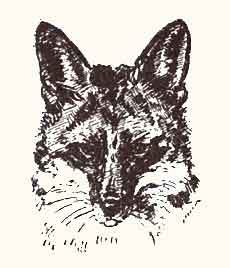
Fox Mask
Biddable: A hound that obeys well and is responsive to the huntsman. He can be lifted off one line brought to a new line and will hunt that line. He only hunts fox, not any other game.
Break Covert: A fox breaks covert (cover) when he runs out of it.
Breast High: Scent is said to be breast high when it rises to the level of the hounds’ noses so they can hunt at top speed.
Brush: The fox’s tail.
Capping Fee: The amount paid by visitors (prior to the hunt) for the privilege of a day’s hunting. (In the early days visitors paid the fee in silver and dropped it in the cap of the Hunt secretary.)
Check: When the field stops. Also known as a hold.
Colors: A collar of definite color registered for a particular Hunt.
Country: The area assigned to a Hunt.
Couple: Foxhounds are coupled together (attached by leather collars) by twos. Foxhounds are always counted by twos known as a couple.
Covert: (Pronounced “cover”.) An area, usually wooded, which provides protection for animals.
Cry: The voice of a foxhound pursuing quarry is called a cry, or, giving tongue. Full cry occurs when every hound in the pack cries on the line of a fox.
Cub Hunting:The weeks preceding the beginning of formal foxhunting are known as the cub hunting season. It is technically incorrect to refer to this as Cubbing Season, although the expression is widely used.
Cub: A young fox.
Cur Dog: Any dog, other than a foxhound, is known as a cur dog by foxhunters.
Draw: The Huntsman and hounds are said to “draw a covert” when they search every part of the covert for a fox.
Field: Those who follow foxhounds on horseback, other than the Hunt staff, are known as the Field. They are usually led by a Field Master. The fields are often split into First Flight, Second Flight and Third Flight depending on the size of the group. First flight attempts to keep up with the huntsman and jumps obstacles as necessary. Second flight attempts to keep up with the huntsman but usually goes through gates rather than jumping obstacles. Third flight moves at a slower pace with the goal of maintaining a view of the huntsman and field, often known as "hilltopping".
Fixture Card: Lists the dates, times, and places where hounds and riders will meet during the ensuing month.
Foil: When a fox doubles back on his line, he is said to “run his foil.” Ground is foiled when it bears some scent (sheep, cattle, etc.) besides that of a fox.
Go To Ground: A fox “goes to ground” when it takes refuge in a hole.
Gone Away: The call “gone away” indicates the fox has left the covert.
Guests: Guests are encouraged, but they must have permission from a Master, be properly attired and be accompanied by a member of the Hunt.
Hark: A command used by the Huntsman to encourage hounds to listen.
Hit the Line: A hound hits the line when he finds the line (scent) and gives tongue.
Hold Hard: Stop, please!
Holloa: Pronounced “Holler.” The high-pitched call of someone such as the first Whipper-in who views (sees) a fox breaking covert.
Huntsman: The Huntsman is in charge of and directs the hounds on hunting days. When the Master or an amateur hunts hounds, he or she is known as the Honorary Huntsman.
Lark: To “lark” is to jump fences when hounds are not hunting or when on the way home after hunting. The Farmington Hunt does not recommend larking.
Make Way: If the Huntsman wants to warn the Field of the approach of hounds, he or she will say “hounds please,” “Huntsman please,” or “make way.”
Mask: The head of a fox.
Meet: The place where hounds, horse, staff, and Field gather to begin hunting.
Over Ride: To ride too close to the hounds.
Pocket: A member of the Field is guilty of riding “in the Huntsman’s pocket” when he continually gets so close as to interfere with hunting the hounds.
Ratcatcher: A term used to designate the informal clothes worn during the cub hunting season.
Rate: To rate a hound is to scold him.
Reverse Field: When the field needs to go in the opposite direction. Riders should pull off the trail, turn their horse's head to face the trail, and let the Field Master pass. A similar protocol may be required when making way for staff or a different field: riders pull off the trail, facing their horses heads in the direction of the trail and then moving off again in order when indicated by the Field Master.
Riot: When hounds hunt forbidden quarry (example: a deer).
Scat: Fox manure.
Scent: The odor emitted from glands of animals that is left on the ground, thus leaving a trail (line) which can be followed, i.e., fox by foxhounds.
Staff: The Hunt staff consists of the Master or Joint Masters, the Huntsman, the Whippers-In, and the Field Master.
Tally Ho: A call indicating the fox has been viewed.
Tongue: A hound is said to give tongue or to throw its tongue when it draws the first covert.
View: A fox is “viewed,” rather than “seen.”‘
Ware: This means beware of holes or wire, etc.
Whippers-In: The Huntsman’s assistants. If the Whipper-In is an amateur, he or she is called an Honorary Whipper-In.

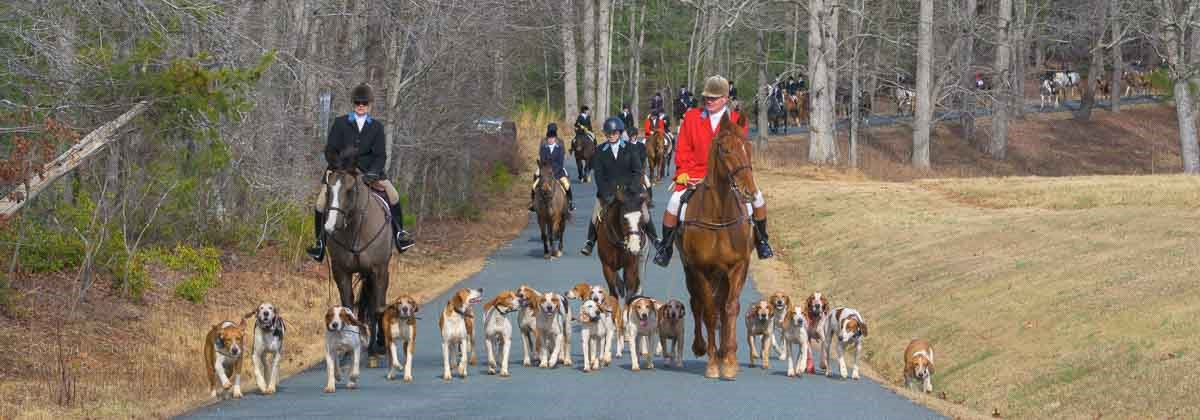



 Gates: Leave gates as they are found. Riders are responsible to pass the word to followers either “gate closed” or “gate open” before continuing. When in doubt, the last rider should close the gate and report the action to the Field Master or a staff member.
Gates: Leave gates as they are found. Riders are responsible to pass the word to followers either “gate closed” or “gate open” before continuing. When in doubt, the last rider should close the gate and report the action to the Field Master or a staff member.
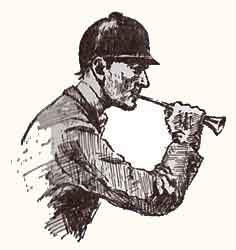 The Huntsman: Hounds are walked, trained and hunted by the Huntsman.
The Huntsman: Hounds are walked, trained and hunted by the Huntsman.